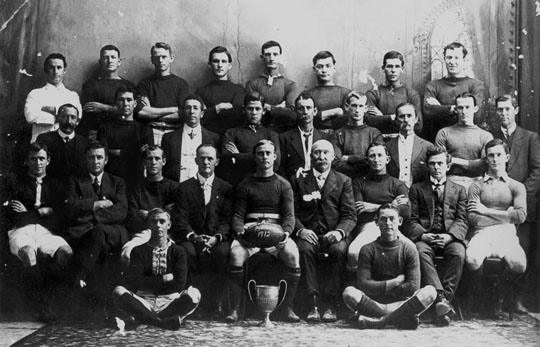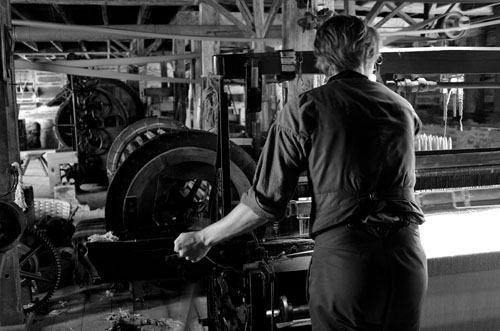Family
13. Dating Photographs - Historic photographs can be an important source of information for genealogists. Too bad many of our ancestors neglected to write down when and where the pictures were taken.
Dating an old photograph can be a challenge. One approach is to look at both the photographic style and the type of paper used by the photographer. This approach, however, can be very technical and requires an in-depth knowledge of photographic techniques and how they evolved over time. A simpler approach is to look for clues in the image itself.
One obvious source of dating an old photograph is to look at the style of cloths worn by the people in the photograph. Fashions changed regularly, usually at least once a decade. This was especially true for woman's fashions.
FindMyPast has put together an excellent article by Jayne Shrimpton that will help you date old photographs from what people are wearing in the picture. [Dating Photographs by Styles of Clothing]

One thing to note is that you do have to exercise some judgement when using clothes to date a photograph. It is usually best to focus on young women, if possible. They tended to stay up to date with the latest fashions. Men rarely changed fashion and older women often wore the same dresses into their forties and fifties that they had bought when they were in their twenties and thirties.
14. Photocopy the Back of Old Photographs – Having old family photographs can be a real pleasure because a picture tells a thousand words. Too bad your relatives forgot to tell you who is in the picture. You turn the back of the photo over and there is nothing written on it. Well, maybe they did write on it but you just can’t see the writing anymore. Try to photocopy the back of the photograph by setting the photocopier to high contrast. You can even try using the enlarge feature on the photocopier.
If there is any faint pencil handwriting on the back, this trick should help bring it out. Why? Traditionally, photographs were very expensive and were only taken on special occasions. Since photographs were expensive, many people wanted to keep the pictures in pristine condition and did not want to write on the back of them. Instead, they relied on their memory. Those that did write on the back tended to use pencil because pencil can be more easily erased.
Pencil can leave a shallow impression on the surface. It is this shallow impression that the photocopier might pick up, not the actual graphite from the pencil, which wears off over time. One word of caution: we do not recommend photocopying the front of the photograph (the side with the picture). The strong light from a photocopier can damage delicate old photographs and make them fade.
15. Men and Double Families – Another marriage puzzle that can occur is when genealogists find evidence that a male ancestor appears to have entered into a second marriage without any evidence that the first marriage was terminated. Genealogists often get stumped with this presumed brickwall. Maybe, however, it is not a brickwall at all.
Multiple marriages were more common than most people realize. Always consider this as a possibility when looking at men who seem to have two families. After all, many jurisdictions lacked a central marriage license system. As well, it was very easy for a person to go by an assumed name.
Are there any clues that can help point someone to this possibility? One attribute of men that have engaged in multiple marriages is that they often had jobs that required them to travel on a regular basis. This would allow them to more easily keep two families in two separate towns. It also took money to maintain two households (where women likely did not work outside of the home). A travelling businessman was the most common profile of someone with two families.
Some cultures/societies also allowed men to have more than one wife (see the article Ellis Island Immigration Records).

16. Women’s Age and Marriage Certificates – An interesting challenge in genealogy is dealing with conflicting facts. For example, having different documents with different dates of birth for the same individual is a classic conundrum.
One area where this can occur is with a woman’s age on marriage certificates. Throughout time and across most cultures it is generally expected that a married woman will be younger than her husband.
Obviously, this is not always the case. However, to ensure this happens, it is not uncommon for a woman to ‘shed’ several years of age on the date of birth listed on her marriage certificate.
Always consider this as a possibility when looking at the ages listed on marriage certificates. In other words, when tracing back to birth records of married women based on their presumed age on a marriage certificate, it is usually a good idea to look farther back in time if you do not have success with the date stated on the marriage certificate.
Also, if you have conflicting dates between a birth certificate and a marriage certificate, the birth certificate is almost certainly the correct date. (see Look for Missing Marriages)

